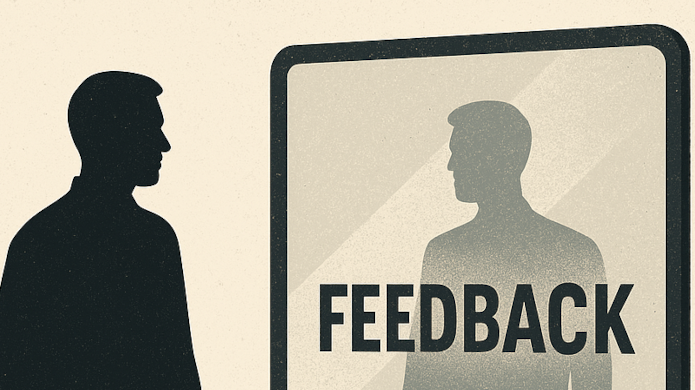Feedback That Actually Works

Feedback is the mirror that shows us where to grow — and it works best when it’s quick and straightforward.
Many people dread both giving and receiving feedback, but it’s one of the fastest ways to shift how someone thinks and acts. I used to avoid feedback to “keep the peace,” but I learned a better way.
Even before I was a manager, I was responsible for my team. My boss was juggling more than 20 developers and delegated some tasks to me. I coached the team without a title, but I was far too timid about giving candid feedback.
I worried they wouldn’t like me if I gave critical feedback, so I hinted instead — hoping they’d get the message. If someone were late, I’d say “Ah, there you are at last…” and hope it landed. It rarely did. Eventually, I learned to be clear and direct.
Here’s what that looked like in practice — three similar situations, three different outcomes.
Scenario 1: The Boiling Point
A teammate — let’s call him John — was late to standup. The first time, I let it slide. Weeks later, it happened again — then again, closer and closer together. I finally pulled John aside and said, “You were late for standup today. It seems to happen quite often.” He shot back: “This was the first time. Cut me some slack. Besides, I thought it was not a big deal.” I’d let it simmer until it boiled over. I had to smooth things over and explain what the team expected. It caused some tension, but John took the feedback and improved.
Scenario 2: The Quick Fix
Half a year later, it happened again — with another teammate. This time, I didn’t wait. “Today you were late, and you were late last Tuesday as well. Please make sure to come on time in the future.” The quick, specific feedback worked. The issue never grew into a problem. By then, I was a more seasoned team lead and more confident in my approach.
Scenario 3: When Feedback Isn’t Enough
Later, a third colleague kept coming late. I gave clear feedback early, but it didn’t work. More issues surfaced, and I realized feedback alone wasn’t the answer. It wasn’t a cure, but a way to surface the real issue faster.
I learned that feedback can resolve friction with good preparation, but sometimes additional measures must be taken.
Here are the key steps for a proper feedback:
- Gather the facts first.
- Address it right after the incident.
- Focus on the future, not the past.
- Give critical feedback in private and positive feedback in public.
If the facts still feel fuzzy, make a note and wait until you see a pattern. Confront the person only when you’re sure there’s a clear case. Be crystal clear about what happened and what you expect next. If they have to guess what you mean, it’s not feedback.
It’s easiest to talk about something while it’s still fresh. The longer you wait, the less impact your feedback will have though you can always catch it the next time.
You can’t change the past, but you can change what happens next. Dwell too much on what already happened, and people get defensive. Instead, accept what happened and focus on what you can improve from here. No one likes public criticism. Make it easy for people to stay open and receptive by giving negative feedback privately.
Positive feedback, though, is powerful when shared publicly:
- You give it quickly and directly.
- You praise the receiver in front of others.
- You show the team what good looks like and that you’ll celebrate it when they follow the example.
Better culture starts with more feedback.
Last edit: 2025-09-17